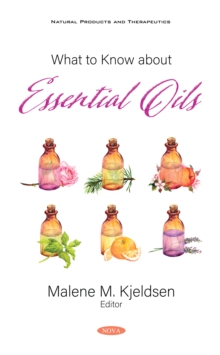
Fundamentals of Flavonoids and Their Health Benefits. A Textbook for Undergraduate, Graduate, and Postgraduate Students PDF
by Katrin Sak
Part of the Natural Products and Therapeutics series
Description
Flavonoids are a large group of naturally occurring polyphenols which are synthesized by plants as secondary metabolites.
They are ubiquitously present throughout the plant kingdom and have several important roles in plant physiology, especially as pigments and defense agents.
Humans have consumed flavonoids as major constituents of plant-based foods and herbal remedies since ancient times.
Although the first evidence of a biological activity of flavonoids was reported almost hundred years ago, an explosive growth in the flavonoid research occurred in the 1990s, after several epidemiological studies showed an inverse association between the intake of flavonoids and the incidence of chronic degenerative diseases.
To date, more than 9,000 flavonoids have been identified, revealing a wide spectrum of biological activities, including antioxidant, anti-inflammatory, antimicrobial, anticancer, cardioprotective and neuroprotective effects.
These phytochemicals can interact with different molecular targets and intervene in diverse cellular processes, providing protection against various human diseases, mostly age-related degenerative disorders.
Therefore, flavonoids are considered not only important nutraceuticals, but also the candidates for novel drugs.
Despite the rapid and vast development of flavonoid research, no textbooks for teaching this discipline in universities and health colleges are available to date.
Thus, the current book presents the first textbook to be used as the basic learning material for teaching flavonoids within the main courses of phytochemistry and pharmacognosy as well as the special courses about plant polyphenols.
It covers all the most important topics on flavonoids, including their chemistry, natural diversity and sources, biosynthesis and roles in plants, metabolism and bioavailability in humans, and diverse bioactivities and health benefits, such as antioxidant, anti-inflammatory, antibacterial, antifungal, antiviral, antidiabetic, cardio- and vasculoprotective and anticancer effects.
By providing a comprehensive overview, this textbook is suitable for students at their different academic levels, both undergraduate, graduate and postgraduate stages.
Information
-
Download - Immediately Available
- Format:PDF
- Pages:347 pages
- Publisher:Nova Science Publishers, Inc.
- Publication Date:19/02/2024
- Category:
- ISBN:9798891135215
Information
-
Download - Immediately Available
- Format:PDF
- Pages:347 pages
- Publisher:Nova Science Publishers, Inc.
- Publication Date:19/02/2024
- Category:
- ISBN:9798891135215










